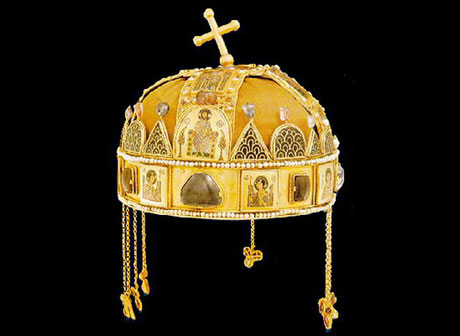History of Budapest

It is highly likely that no other European capital has played a role as important as it is the case with Budapest in relation to Hungary. Almost one fifth of the total population of Hungary, meaning about 2 million inhabitants, lives in the capital. Budapest is a faultless European city. Each year, Budapest offers residence to both people coming from other corners and cities of Hungary and to plenty of foreigners coming from the rest of Europe and worldwide. During its history, the city was repeatedly destroyed, and its locals virtually exterminated; however, the city has managed to come back to life and make its way through, evolving and developing. Each era has left its print and marks, each of them brought moments of great destruction, as well as periods of prosperity for Budapest, a city everyone admires today, along with its imposing landmarks and buildings.
The Danube, the navigable motorway of Europe, connects the two parts of Budapest with their sundry districts. The Buda Hills and the smooth slopes of Obuda on the left bank, as well as the Pest plain diversify the city layout. Of all the islands on the Danube, Margaret Island has the most beautiful parks.
It’s not just the Danube, but the hot thermal springs too which have concurred to the development of Budapest. Despite the fact the region has been inhabited since the Stone Age by the Celts from western Europe, or by the Avars from the east part of the continent, the first significantly populated city was founded by the Romans, famed for being keen on thermal baths. Within the region nowadays known as Obuda, the locality of Aquincum (in Latin) was the capital of the entire occupied territory of the Eastern Pannonia Plain. The Ottomans, who have dominated the territory for more than 150 years, have also built countless baths. Only some of these have managed to survive, waiting to be visited by tourists keen on thermal treatments.
Budapest was born by the unification of the cities of Buda, Obuda and Pest in 1873. The Royal Palace and its surrounding district are essential for the layout of Buda. Much of the residential district was built during the 20th century. Buda has played an essential role in the life of the Hungarian people ever since the Hun invasion in the 11th century. Subsequently to the Mongol invasion in 1241, the first fortress was built here, in order to protect the population. Ever since the Middle Ages, Buda has been the place were emperors used to be crowned and the royal seat. On the other hand, the armies and the force of the Ottoman Empire, the sieges, the wars and the battles and, eventually, the final battles during World War Two have destroyed what was left from the old palaces of Buda.
After the Romans' retreat, Buda lost much of its importance. At the unification, the city was industrially and commercially active. Yet, until now, all these have radically changed. Plenty of the charming buildings of the city did not manage to survive, their site having been used for the construction of communist buildings and apartment houses during the 7th and the 8th decades of the 20th century.
The landscape of Pest, on the left bank of the Danube, is dominated by the economic and social dynamics of the last period, dotted with 19th century buildings owned by the middle social classes. Pest faces serious issues related to the city traffic, as a result of the economic and demographic boom of the region.
The unification of the three independent cities was possible only by the construction of the sundry bridges over the Danube. Previously to the completion of the construction works at the Chain Bridge, in 1849, the ferries and the temporary wooden bridges were the only ones which connected the two banks. At the end of the Second World War, all of the bridges over the Danube were destroyed. At present, the two regions of the capital are connected by seven bridges. Of these, the Liberty Bridge, Margaret Bridge and the Chain Bridge can be admired in their original beauty.
The reconstruction and restoration of such neglected and abandoned edifices is in progress. The economic boom after the communist period has boosted up and encouraged these restoration works at the historical buildings and structures. Budapest turns into a genuine European city where the past and the present join together in harmony.
 Saint Stephen's Crown
Go to top
Saint Stephen's Crown
Go to top